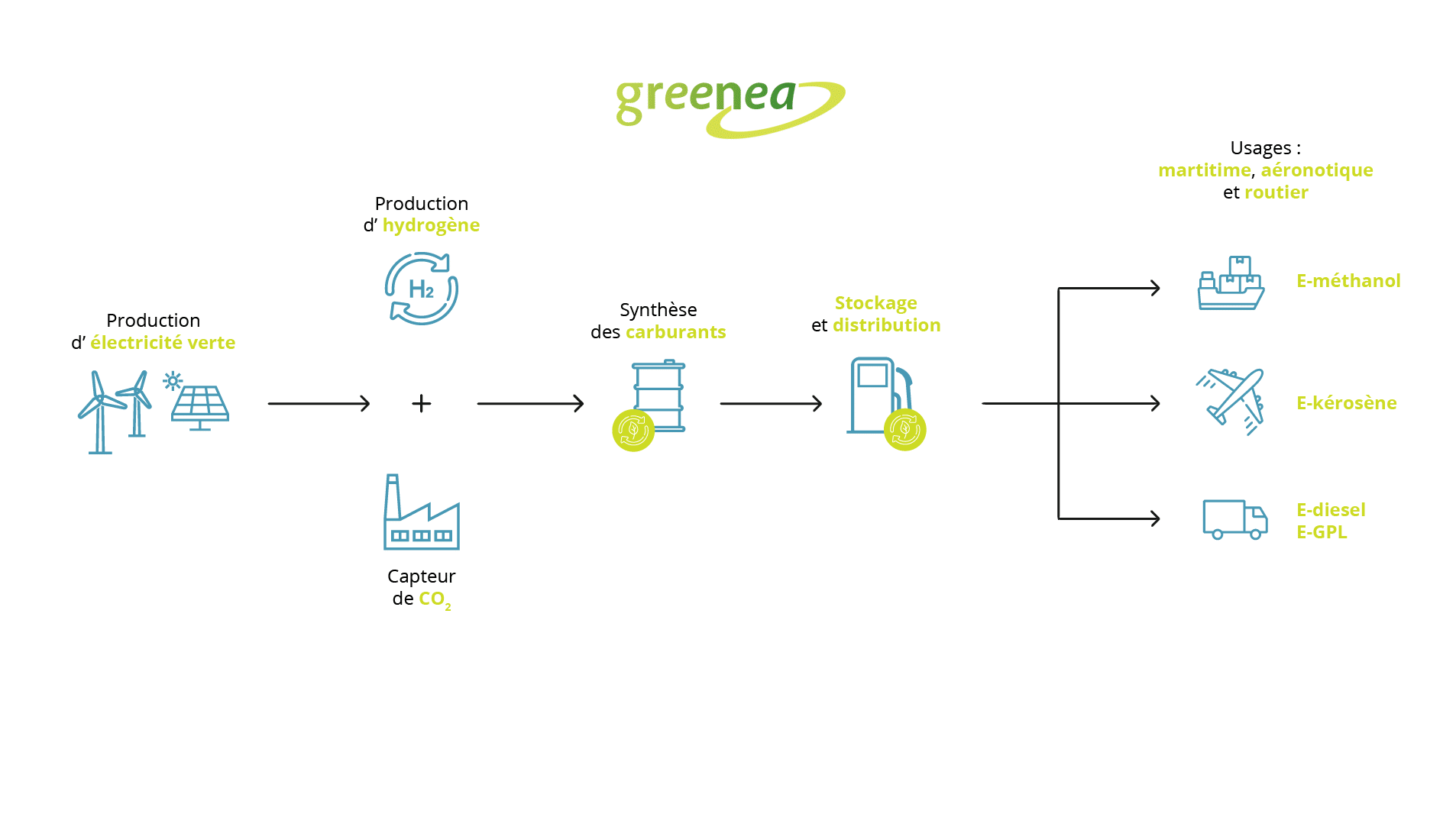Products
Greenea, a player in the circular economy, to promote the production of biofuels and bioenergy from waste

products already existing for 15 in the company
Biofuels and feedstock at GREENEA: 80% of the products we trade are residual products. Pionner in the biofuels sector from residual and advanced raw materials.
Our range
While yesterday's world was focused on one product that could be counted on the fingers of one hand, tomorrow's world will be multi-use and multi-product, each one meeting a specific need in a field where it makes the most sense.
The (Renewable Fuels of Non Biological Origin)
RFNBO
Renewable liquid and gaseous fuels for the transport sector, of non-biological origin
Renewable hydrogen
Electricity from wind, solar, hydro, geothermal
E-fuels: These are synthetic fuels whose reagents are essentially captured carbon dioxide and hydrogen, which represent the best long-term alternative to fossil fuels. Why “e” in e-fuels? The e comes from electricity which can be used to make hydrogen by electrolysis.
Recycled Carbon Fuel (RCF): liquid and gaseous fuels that are produced from liquid or solid waste streams of non-renewable origin that are not suitable for material recovery in accordance with Article 4 of Directive 2008/98/EC, or from waste treatment gases and exhaust gases of non-renewable origin that unavoidably and unintentionally arise from production processes in industrial installations.

Renewable liquid and gaseous fuels for the transport sector, of non-biological origin
For whom?
Biofuel producers
Refineries and oil distributors
Co-generation units and thermal power plants
Biogas producers
Oleochemistry
Alternative fuel distributors
Ready to transform your business with our energy solutions ?
Contact us